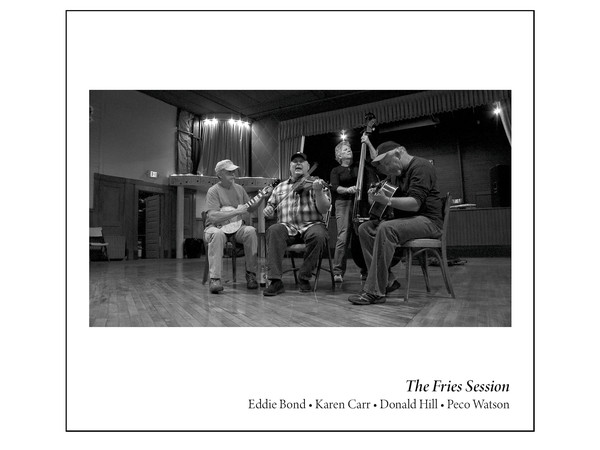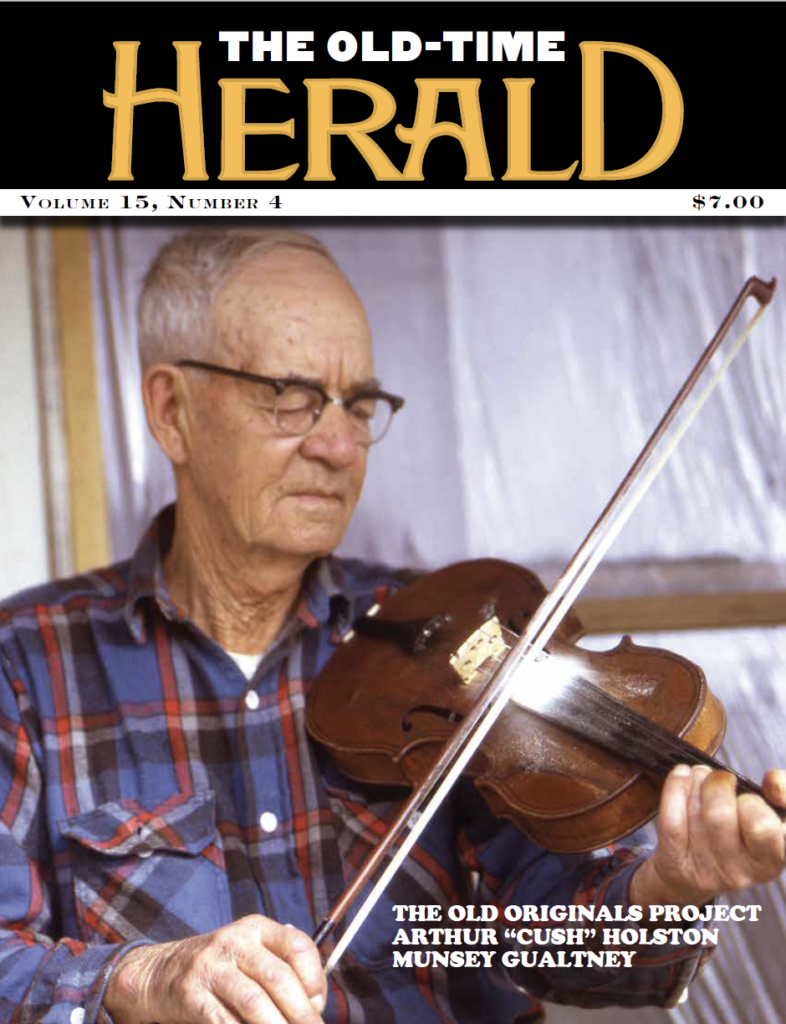
All four of the musicians on The Fries Session live in or near Fries, Virginia, which is in Grayson County. They are part of a musical heritage that extends back at least a century and is ongoing. Eddie Bond, fiddler, is a recent winner of a National Heritage Fellowship and is a native of Fries. (As the local saying goes, the mill town’s name is pronounced “freeze” in winter, but “fries” in summer.) Peco Watson, banjo, lives in the next town over, Galax, and plays regularly in the New Ballards Branch Bogtrotters. Donald Hill, guitar, was a member of the Crooked Road Ramblers and is Eddie’s cousin; Eddie remarked that Hill’s father was one of his early influences, helping to get him started in music. Karen Carr, bass, is the current bass player in the Crooked Road Ramblers.
If they all play in other bands, how come they sound so tight and so good together? Let’s go back to that “musical heritage” phrase—every musician here is so steeped in the tradition and the repertoire of southwestern Virginia that they can interact easily in a band to make good music. These people grew up listening to, and making music with, Tommy Jarrell, Fred Cockerham, Kyle Creed, Benton Flippen, Mac Snow, and other heroes. As evidence, dig into your Field Recorders’ Collective CDs (you HAVE some, I hope!) and compare the tune list on FRC 109 and 110 (Round Peak Volumes I and II) with the ones on this recording. Continuity!
How do they interact? Fiddle states the melody, with double stops and variations. Banjo keeps rhythm by downpicking (clawhammer), playing simple chords and doubling some of the melody notes without trying to follow the melody exactly. Guitar also keeps rhythm with boom-chuck and very few runs. Bass adds the bottom end, keeping the groove going. Deconstructed as above, it sounds simple, but the depth and subtleties are there.
These tunes and songs go back a long time. Henry Whitter, who came to Fries to work in the mills, recorded “New River Train” in 1925. (And Fries is actually on the New River, well upstream from where you cross it coming from the south on the way to Clifftop.) “Sally Anne” was first recorded by Al Hopkins in 1926. The fiddler on the first commercial recording of “John Brown’s Dream” and “Lonesome Road Blues” was Ben Jarrell, Tommy’s father, back in 1927. “Jimmy Sutton” was also recorded by Henry Whitter in 1928, with G. B. Grayson playing fiddle.
For a tradition to endure, it has to evolve. For instance, “Hangman’s Reel” is a relatively new tune created by Albert Hash (1917-1983) who as a young man played with Henry Whitter. “Durang’s Hornpipe” started as a written tune in the 18th century, pretty much as it is written in Cole’s 1000 Fiddle Tunes. The third part, bouncing the bow on the D string, was added by Clark Kessinger sometime between his 1928 Brunswick recording and a later recording made some time in the 1960s, where it can be heard. Both of these tunes sound totally traditional, despite their relatively recent origin.
This is primarily an instrumental album, although Eddie’s singing on “Lonesome Road Blues” and “New River Train” shows his strengths as a singer. My two complaints about this album: no liner notes, and its shortness, about 35 minutes for twelve tracks. Neither of these comments should keep Old-Time Herald readers from buying, and enjoying, this CD!

Leave a Reply